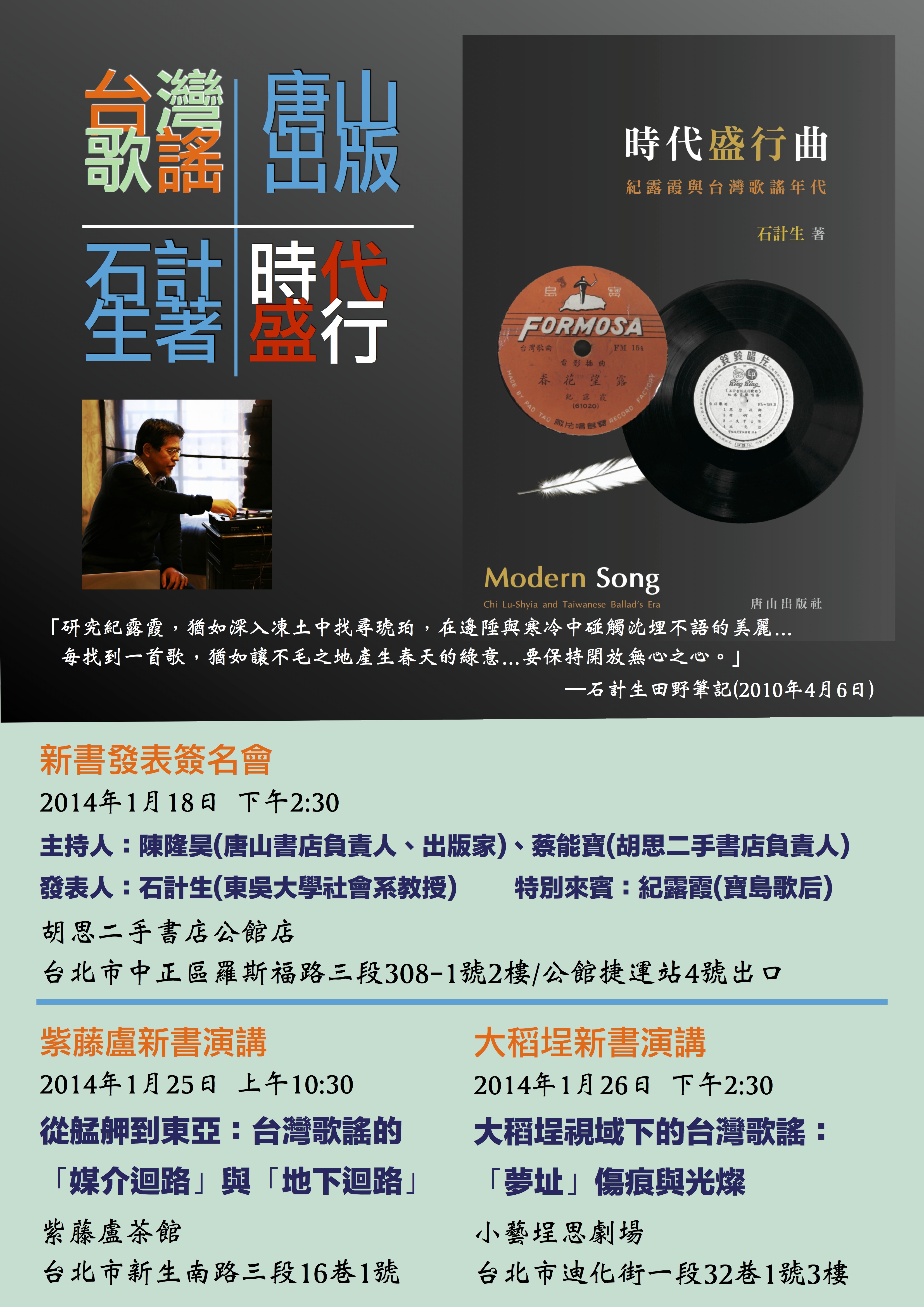石計生教授著《時代盛行曲:紀露霞與台灣歌謡時代》 (臺北:唐山出版社,榮譽出版,2014.01)
— 安德魯 瓊斯教授序言:臺灣流行音樂的“地質學” Preface: “Geologies” of Taiwanese Popular Music /Andrew F. Jones (Professor, Department of East Asian Languages and Cultures, University of California, Berkeley)
如果你手中握著的這本書像是一本能連結到「隱蔽知識」,需要被理解的臺灣歌謠如何且為何成了現在這個樣子的地理挖掘的話,它的「關鍵樣本」就是和臺北城市相關的紀露霞的音樂。她的唱片,石頭教授告訴我們,是經由一複雜的「媒介迴路」而產生—它包括了活躍的音樂家,企業家,唱片工廠,唱片行,廣播電台,現場演出地,粉絲聚會地,業餘表演團體與出版文化等。從臺北,這些迴路擴展到臺灣的南邊與鄉下,向北流傳到日本,而且和石頭教授所稱的「文化中國」有著現實與想像的連結。顛覆且修正了一般所認為的流行音樂歷史,石頭教授讓我們看到臺北不只是一個日本和中國「影響」下的接收者,它還是能在這個區域網絡擴張裡的活躍節點。本書的每個章節都揭露了這些迴路的不同面向,同時有在地堅持與不可消除的跨界, 因為這樣,它們就強力推進了我們所聽到的臺灣乃至整個東亞的流行音樂歷史的地殼構造變動。
If the book you are holding in your hands can be likened to a kind of geological excavation of the “hidden knowledge” needed to understand how and why Taiwanese music sounds the way it does, its ‘core sample’ is the music of Chi Lu-shyia, in its relation to the city of Taipei. Her records, Professor Stone shows us, are produced out of a complex “media loop” — one that encompassed a world of working musicians, entrepreneurs, record factories, record stores, radio stations, live venues, fan clubs, amateur performance groups, and print culture. From Taipei, these loops extended to the South and rural Taiwan, circled north to Japan, and was linked both materially and imaginatively with what Professor Stone calls “cultural China.” Reversing and revising the usual way of thinking about popular musical history, Professor Stone allows us to see the ways in which Taipei was not just a recipient of Japanese and Chinese “influence,” but an active node in a network extending throughout the region. Each of the chapters in this book reveal different aspects of these loops, at once insistently local and irrevocably transnational, and in doing so, they force a tectonic shift in how we hear the history of popular music in Taiwan and in East Asia as a whole.




jpgAA.jpg)
